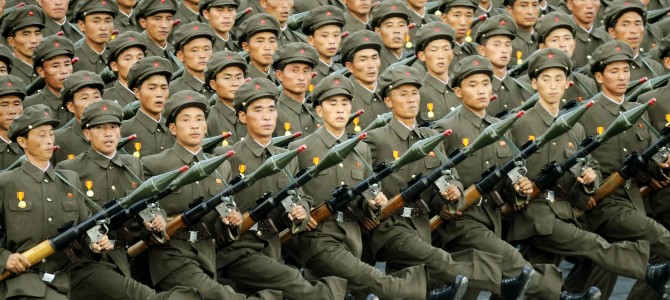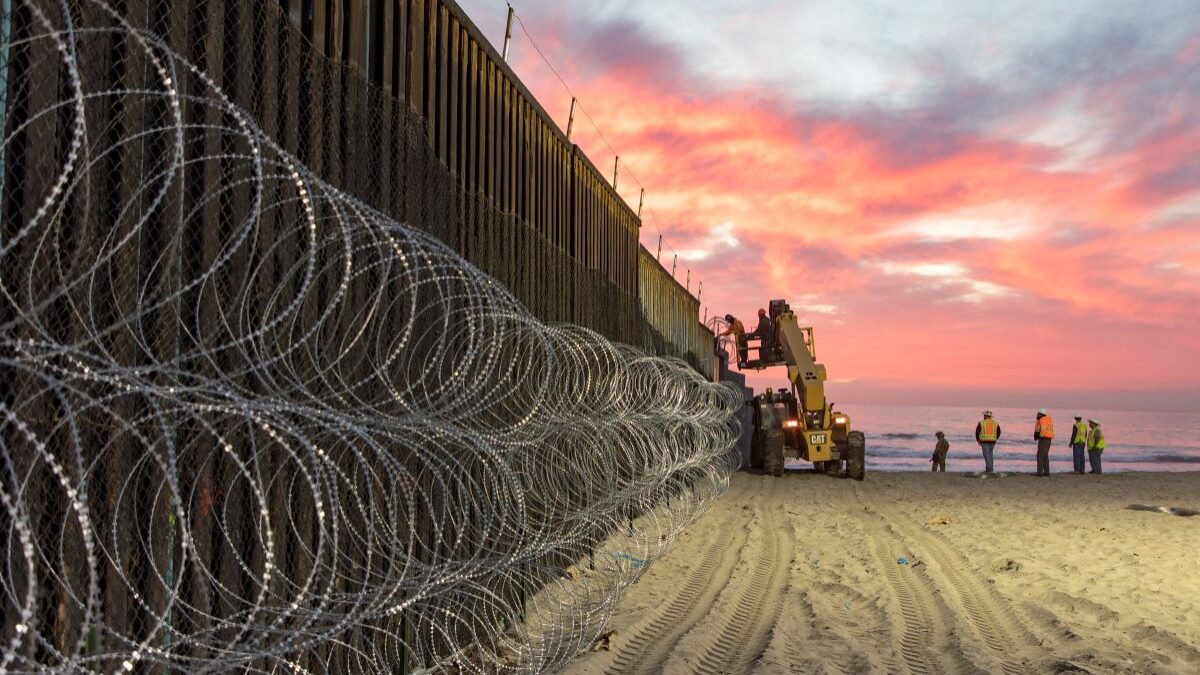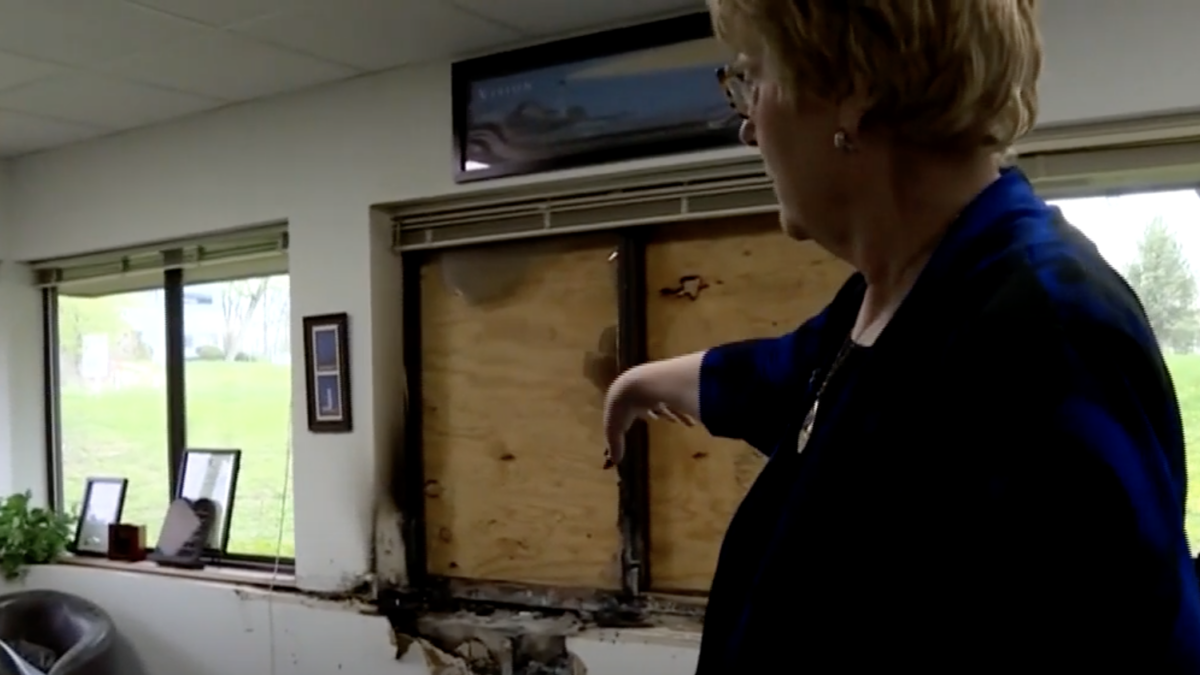
Many people complacently ignore the threats posed by the Democratic Peoples Republic of Korea (DPRK)—as if it’s a fourth-world country run by a chubby, raging lunatic who needn’t be taken seriously. But those of us who keep our binoculars on North Korea (albeit from Google Earth or declassified maps) know that ignoring Kim Jong Un is an error we may not live to regret.
What kind of an attack could Kim hurl at us? One that could kill between 75 percent and 90 percent of our population, relegating Americans to endangered society status and transporting those surviving back in time to the mid-1800s—if we’re lucky.
Most people, especially those who don’t know who Kim Jong Un is, are unaware that he has a nuclear arsenal, albeit a minuscule one (38North.org, a site that closely monitors North Korea, estimates that “…a stockpile of sufficient fissile material for approximately 20 bombs by the end of this year and a capacity of adding approximately 7 per year makes the DPRK claim sound plausible”). This arsenal poses no serious threat to the U.S.
But it’s not the threat of a nuclear missile attack that concerns Dr. Peter Pry (who heads the Taskforce for National and Homeland Security, and for which I volunteer some of my time), ex-CIA director James Woolsey, Center for Security Policy Founder and President Dr. Frank Gaffney, and others who closely monitor nuclear developments in the DPRK. We are all deeply concerned about the horrendous potential for Kim Jong Un to use just one device—one which poses a threat far more devastating than a full-on Russian nuclear attack.
North Korea Wants to Wipe Out the U.S. ‘All At Once’
On September 9, the North Koreans conducted their fifth nuclear test, this one the biggest of five, registering a 5.3 on the Richter scale and estimated at 20 to 30 kilotons. In this case (as with an earlier test conducted in January), it may be difficult for our radiation sniffing-planes to pick up much fallout. The January test produced seven to 10 kilotons, yet we didn’t pick up any alarming release of radiation. Why?
Many believe it was not a conventional nuclear test for two reasons: first, both of the latest detonations were likely hydrogen-based devices, making them thermonuclear. Second, the kinetic yield (radioactivity) was sacrificed to increase gamma ray emissions.
Why is that important? Because the DPRK isn’t interested in making several of our cities glow. They want to take us out “all at once.” After the January test came this from North Korea’s news service, KCNA: “The scientists and technicians of the DPRK are in high spirit to detonate H-bombs of hundreds of Kt (kiloton) and Mt (megaton) level capable of wiping out the whole territory of the U.S. all at once…” [Emphasis added]
While that may seem like the typical bellicose, hyperbolic venom Kim Jong Un tosses our way, it’s not. This time, his saber rattling may have him tossing the sheath away. What would send us to oblivion “all at once?”
An EMP, or a Super-EMP. If you understand what an EMP is, you’re ahead of the game. Unfortunately, few in this country have the faintest idea what it is, and probably don’t care.
What’s An EMP, And What Can It Do?
EMP stands for “electromagnetic pulse,” and it is truly devastating to anything and everything that has a microchip in it or is part of the crumbling, antiquated, and hopelessly snarled convergence of wires we call our electric grid.
The grid comprises three major sections: the Eastern Interconnection, which provides the nation with 75 percent of its power; the Western Interconnection; and the Texas Interconnection, all of which hopelessly lack the kind of hardening we need to protect them.
An EMP-based weapon would do a good deal of damage. But if the last two DPRK tests involved thermonuclear devices, they could become Super-EMPs. When those are put aboard a satellite and detonated 300 miles above the center of the U.S., just one of them would impale technology addicts on a painful and sharp withdrawal spike, while tossing our urban and suburban populaces into abject panic and chaos.
As I write this, the DPRK has two satellites flying above us on a south to north trajectory. It’s the same satellite route the Soviets used during the Cold War. Back then, the prevailing wisdom was that if the Soviets to launch their nukes at us, the missiles would come over the North Pole. In response, we stationed our missile defense systems in the north. Since the Soviet Union shattered, that defensive posture has not changed, leaving no defense in the south or along the Eastern Seaboard.
While no data stream has been detected coming from either “earth-based satellite” (according to the DPRK), it is not known whether nuclear devices are aboard those satellites or whether they are “test vehicles.”
In response to those devices and one recent rocket engine test, the U.S. and U.N. have showered Kim Jong Un with sanctions that hurt members of the ruling class, including him. The North Korean people are beyond impoverished, and live with the government’s hand around their throats.
According to FoxNews.com, “Kim [Jong Un] was quoted as ordering officials and scientists to complete preparations for a satellite launch as soon as possible, amid the enemies’ [the U.S.] harsh sanctions and moves to stifle the North.”
And Joel Wit, founder of the 38 North website, notes that “This test is another important development pointing to the first launch of a bigger, better space vehicle to place satellites in higher orbits, which could happen in the not too distant future.”
Kim’s request for a satellite in higher orbit is particularly troubling: it means he could pack an EMP or Super-EMP device on it and put it into orbit over the U.S. Unless we take swift measures to “harden” our electric grid and military assets—and soon—America could become an endangered society. An EMP or Super-EMP detonated at an altitude of between 25 and 300 miles (the higher the better) would be cataclysmic.
The Apocalyptic Power of the Super-EMP
The detonation itself would not harm us physically. The kinetic energy (radiation) would dissipate harmlessly in space. The increased gamma rays, however, would race toward earth in three waves, milliseconds apart. Electrons in air molecules in our atmosphere would be knocked out by gamma rays in massive numbers that then rush earthward. Once they came in contact with the ground, they would take out transformers in substations. Hyper-electrical pulses would snake along our electric lines, destroying transmission and distribution technologies as they go.
The immediate effects would be withering: planes in flight would start falling from the skies. Chemical plants that control hazardous materials would no longer be controlled, imperiling all who live nearby as their computerized technology fails. Most cars built after 1974 would lose power. Trains, especially those operating on electrified tracks, would come to a halt. Tens of thousands would be stuck in elevators nationwide.
But the biggest long-term threat manifests as the “Rule of Threes.” We can hold our breaths for three minutes. We can go without water for three days, and without food for three weeks. City populations living in skyscraper apartment buildings would no longer get water pumped to them. Bottled water would disappear from supermarket shelves on the first day. Most submarkets are stocked for only three days worth of consumable inventory, especially meats and fresh vegetables.
Perhaps most vulnerable in the transmission and distribution system are huge transformers that are extremely hard to replace, and (as with so many other industries) no longer manufactured here. They now come from Germany and South Korea. Each is unique and designed to fit in a specific place within substations, of which nine are critical.
These transformers are complex power regulators that take a year to build and cost $10 million. They must be shipped here and off-loaded to special trucks that can accommodate them. Each one can weigh over 400 tons. A standard 18-wheeler won’t do the job. Their tires would burst. Plus, gasoline would become extremely scarce. Oil refineries would cease to function, so finding enough gas to power these huge trucks would be nigh impossible. We have some backup transformers here, but nowhere near enough to replace all of the damaged ones hit by an EMP. Estimates are that it would be at least a decade before we could replace enough transformers to get at least some electricity flowing.
Only the Preppers Will Survive
But failure of the grid presents a secondary and even more devastating effect, one that would threaten even those in the hinterlands.
According to the U.S. Energy Information Administration, “There are 60 commercially operating nuclear power plants with 100 nuclear reactors in 30 states in the United States. Of these plants, 36 have two or more reactors.” Nuclear power plants are as dependent on power from the grid as any other energy-consuming entities. The Nuclear Regulatory Agency mandates that a one-week supply of diesel fuel be sustained at each nuclear plant to fuel the backup generators. But it’s useless if there are any computer chips running those generators. The only other possibility is to use battery backups for as long as possible. When those fail, even reactors taken offline need to be bathed constantly in cold water. Without generators or batteries to pump that water, there’s no way to cool the reactors or the spent-fuel-rod pools. Once the water boils off, it’s Fukushima times 100.
All of those reactors will melt down with the spent-fuel rods. Hydrogen will build up in the tops of the reactors, as it did in Fukushima, and if ignited would cause the same explosions we saw in Japan. With the Jet Stream flowing from west to east, radioactivity would cover the nation.
Regardless of how it’s done, few would survive an EMP attack. If we were to be hit by a Super-EMP, only those who have amply prepared by having renewable water supplies and food stores will have a chance.
As a measure of how seriously this threat is taken by the military, consider that NORAD has scurried back under the protection of Cheyenne Mountain in Colorado. They are currently spending a $70 million allocation to further harden the facility.
With Kim as unpredictable as he is, we’d be wise to do all we can to convince our federal and state governments to protect our electric grid. If we fail to do so, the consequences could be cataclysmic.









